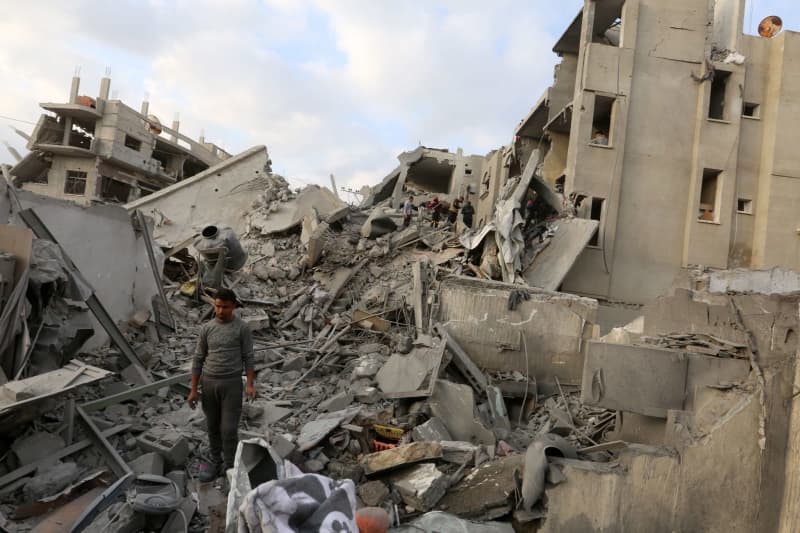On a recent Friday, the Israeli Air Force announced a significant military operation, reporting strikes on over 200 targets in both the Gaza Strip and Lebanon within a 24-hour timeframe. This operation was specifically aimed at dismantling command centers and rocket launchers attributed to the militant groups Hamas and Hezbollah. The Israeli Defense Forces (IDF) provided further details, indicating that these airstrikes were part of a broader strategy to neutralize threats in the region and enhance security for Israel. While the military agenda focused on targeting armed groups, Palestinian and Lebanese sources reported civilian casualties amid the intensifying conflict, raising concerns about collateral damage and the humanitarian impact of such military actions.
The Israeli military emphasized the strategic nature of its operations, stating that it maintained “limited, locally concentrated and targeted activities” in southern Lebanon. This involved ground troops identifying and eliminating terrorists, locating weapons caches, and destroying the infrastructure used for launching attacks against Israel. The IDF’s approach reflects a calculated effort to address perceived threats while trying to minimize broader confrontational engagements. Nevertheless, the military actions taken have sparked a surge of tension in the region, drawing international scrutiny regarding Israel’s tactics and the ongoing humanitarian crisis in areas like Gaza.
Amid the air operations, the IDF reported conducting over 150 airstrikes in both the Gaza Strip and Lebanon within a single day on Thursday. This level of military activity illustrates the intensity of the confrontations occurring in the northern and southern fronts against Hezbollah and Hamas, respectively. Furthermore, the report indicated that the Iranian-backed Hezbollah militia retaliated by launching around 90 projectiles towards Israel during the same period. This reciprocal escalation underscores the volatile nature of the conflict, as both sides appear to engage in a cycle of attacks and counterattacks, each trying to assert dominance and disrupt the other’s operational capabilities.
As civilian casualties mount in the region due to these military confrontations, there is growing alarm among humanitarian organizations and international observers regarding the day-to-day realities faced by individuals caught in the crossfire. Reports emerging from both Gaza and southern Lebanon reveal the toll such military actions are taking on non-combatants, underscoring a potential humanitarian crisis. The increasing civilian death toll raises critical questions about the balance between national security objectives and the ethical implications of military operations, prompting calls from various quarters for greater accountability and restraint in the use of force.
The ongoing hostilities not only reflect the longstanding geopolitical tensions in the region but also highlight the complex interplay between local and international actors involved in the conflict. With groups like Hezbollah receiving support from nations such as Iran, the dynamics of military engagement are influenced by broader geopolitical influences, including regional power plays and the interests of foreign governments. The situation remains fluid, with both sides preparing for potential escalations, which could further destabilize the region and lead to a greater humanitarian fallout for affected populations.
In conclusion, the military operations led by the Israeli Air Force against Hamas and Hezbollah epitomize a broader struggle for security in a region fraught with violence and political discord. The intensity of airstrikes and ground operations underscores Israel’s determination to thwart perceived threats from these militant groups; however, the resulting civilian casualties and humanitarian concerns pose challenging ethical questions about the conduct of military engagements. As the conflict continues to evolve, the need for dialogue and de-escalation becomes paramount to prevent further loss of life and to foster conditions that can lead to a more enduring resolution to the underlying issues driving this protracted conflict.

